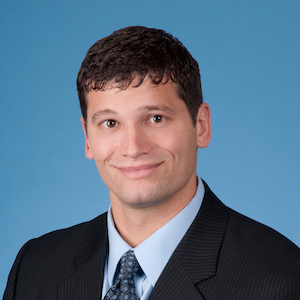 The United States Court of Appeals for the Federal Circuit recently issued a ruling that should provide clarity in calculating patent infringement damages. More specifically, the decision emphasizes that applying the entire market rule (recovery of damages based on the value of an entire apparatus containing several features) may only be applied when the infringed feature constitutes the sole basis for consumer demand. See Power Integrations, Inc. v. Fairchild Semiconductor Int’l., No. 16-2691, 17-1875, (Fed Cir. Sep. 20, 2018) (Before Dyk, Clevenger, and Chen, Circuit Judges) (Opinion for the court, Dyk, Circuit Judge).
The United States Court of Appeals for the Federal Circuit recently issued a ruling that should provide clarity in calculating patent infringement damages. More specifically, the decision emphasizes that applying the entire market rule (recovery of damages based on the value of an entire apparatus containing several features) may only be applied when the infringed feature constitutes the sole basis for consumer demand. See Power Integrations, Inc. v. Fairchild Semiconductor Int’l., No. 16-2691, 17-1875, (Fed Cir. Sep. 20, 2018) (Before Dyk, Clevenger, and Chen, Circuit Judges) (Opinion for the court, Dyk, Circuit Judge).
This case began when Power Integrations, Inc. (“Power Integrations”) sued Fairchild Semiconductor Corporation (“Fairchild”) for infringing U.S. Patent Nos. 6,212,079 (“the ‘079 patent) and 6,538,908 (“the ‘908 patent), both used in power supply controller chips, and directed at a switching regulator and a power supply controller, respectively. A jury found Fairchild infringed both patents and initially awarded damages of $105 million for reasonable royalties. Six months later, while the case was still pending at the district court due to a JMOL motion by Fairchild, the Federal Circuit issued a decision in VirnetX, Inc. v. Cisco Systems, Inc. 767 F.3d 1308, 1329 (Fed. Cir. 2014), which concerned the general rule that a patentee seeking damages based on an infringing product with both patented and unpatented features must “apportion damages only to the patented features.” VirnetXstated that “simply identifying the smallest salable unit is not necessarily sufficient to satisfy a patentee’s obligation to apportion for multi-component products with significant unpatented features.” Because Power Integrations’ royalty calculation didn’t apportion beyond the “smallest salable unit” and it disclaimed reliance on the entire market value rule, the district court granted a new trial on the issue of damages. During the second trial on damages, Power Integrations’ expert provided testimony based on the entire market value rule, and the jury ultimately awarded $138.8 million in damages. Fairchild appealed both the finding of infringement and the damages award.
Regarding infringement of the ‘079 patent, Fairchild argued it did not have a “fixed switching frequency for a firstrange of feedback signal values,” as required by the ‘079 patent’s claims, because Fairchild’s product operated with a 5-15% variance in frequency. Expert testimony demonstrated that no real-world power supply controllers could operate with an absolutely fixed, or non-varying, frequency. Consequently, the Court rejected this argument because it would render the claims inoperable. Fairchild alternatively argued “fixed switching frequency” to include a “non-varying number of switching cycles per second”—a claim construction argument never presented prior to the case being presented to the jury. The Court dismissed this argument, stating “[i]t is well-settled that a party cannot reserve a new claim-construction argument for the post-trial motion stage of litigation.” Accordingly, the lower court did not err in finding infringement of the ‘079 patent.
Fairchild also disputed the lower court’s finding of infringement of the ‘908 patent under the doctrine of equivalents. At issue was whether prosecution estoppel barred Power Integrations from using the terms “voltage” and “current” interchangeably when, in a related parent patent, it explicitly distinguished “voltage” from “current.” Although the patentee specifically distinguished between “current” and “voltage” during prosecution of the parent patent, the language at issue in the parent was different than in the ’908 patent. Accordingly, the Federal Circuit held that Fairchild failed to establish that Power Integrations clearly surrendered the subject matter, making prosecution estoppel inapplicable.
Regarding the damages issue, the Court began by summarizing how royalties should be apportioned between infringing and non-infringing features of the accused product:
Undertaking an apportionment analysis where reasonable royalties are sought generally requires a determination of the royalty base to which the royalty rate will be applied. We have articulated that, where multicomponent products are accused of infringement, the royalty base should not be larger than the smallest salable unit embodying the patented invention. We have cautioned against reliance on useof the entire market value of a multi-component product that includes a patented component because it “cannot help but skew the damages horizon for the jury, regardless of the contribution of the patented component to this revenue.” Uniloc, 632 F.3d at 1320. “Where small elements of multicomponentproducts are accused of infringement, calculating a royalty on the entire product carries a considerable risk that the patentee will be improperly compensated for non-infringing components of that product.” LaserDynamics, 694 F.3d at 67. Admission of evidence of the entire market value “only serve[s] to make a patentee’s proffered damages amount appear modest by comparison, and to artificially inflate the jury’s damages calculation beyond that which is ‘adequate to compensate for the infringement.’” Id. at 68 (quoting 35 U.S.C. § 284). Even when a damages theory relies on the smallest salable unit as the basis for calculating the royalty, the patentee must estimate what portion of that smallest salable unit is attributable to the patented technology when the smallest salable unit itself contains several non-infringing features. VirnetX, 767 F.3d at 1327.
To base its damages theory on the entire market value rule, Power Integrations bore the burden of proving “the patented feature is the sole driver of customer demand or substantially creates the value of the component parts.” Both parties, however, agreed that the accused products contained other valuable non-infringing features. Nevertheless, Power Integrations presented no evidence about the effect of these other non-infringing features on consumer demand or product value. Accordingly, the Court held that the evidence submitted by Power Integrations was insufficient to invoke the entire market value rule, and vacated the award of damages, and remanded for a new trial.
To invoke the entire market rule in assessing damages, a patentee bears the burden of proving “the patented feature is the sole driver of customer demand or substantially creates the value of the component parts.”

![[IPWatchdog Logo]](https://ipwatchdog.com/wp-content/themes/IPWatchdog%20-%202023/assets/images/temp/logo-small@2x.png)



![[Advertisement]](https://ipwatchdog.com/wp-content/uploads/2024/04/Patent-Litigation-Masters-2024-sidebar-early-bird-ends-Apr-21-last-chance-700x500-1.jpg)

![[Advertisement]](https://ipwatchdog.com/wp-content/uploads/2021/12/WEBINAR-336-x-280-px.png)
![[Advertisement]](https://ipwatchdog.com/wp-content/uploads/2021/12/2021-Patent-Practice-on-Demand-recorded-Feb-2021-336-x-280.jpg)
![[Advertisement]](https://ipwatchdog.com/wp-content/uploads/2021/12/Ad-4-The-Invent-Patent-System™.png)







Join the Discussion
4 comments so far.
LazyCubicleMonkey
October 8, 2018 12:54 amThis sounds perfectly reasonable. If a company sells a widget with 10 features, 1 of which is infringing, why should the patentee get all the profits even if the infringing feature resolves to 1/10 of the product?
Eric Berend
October 4, 2018 12:09 pmAt this point, mass murderers are much more respectable in the United States of America, than inventors.
Do inventors receive a stream of marriage proposals in letters from women heretofore unknown to them? No? However, serial killers in prison DO receive such proposals – often, many such offers.
But, online commentary regarding the U.S. patent space has included actual death threats against U.S. inventors, with such useful idiots proclaiming that so-called “patent trolls” are “the worst evil in the world”, in the fervor of artificial contention engendered by IP pirates.
“K Street”, got what it wanted. And, they’ll suck up to the Chinese, just as easily as with Alphabet/Google, Apple, Big Banking (check imaging, online banking), Big Auto (materials science advances, self-driving vehicles) and Big Pharma (who provided the “heavy lifting” necessary to push the 2011 AIA over the line).
The U.S. Constitutional provisions of Article I, Section 8, Clause 8 were intended to establish a basis for incentive of inventors to pursue what is in essence, a glorified lottery type shot at gaining substantial wealth, with its attendant long odds and small chance for success.
We used to be economic heroes, with the general public having at least some vague conception that it wasn’t a guarantee of any sort for the inventor or patentee. But now, Horatio Alger is dead.
In his or her place, there supposedly is the “maker” who can be easily co-opted with little or no legal protection available for the fruits of hers or his creative genius; expensive ads from HP touting the motto “Keep Inventing”; and an army of socialist thought-police digerati who are so sure they are morally superior to you (unless you identify and subscribe as a fellow “collectivist tribe member”).
Pro Say
October 1, 2018 07:20 pmGreat thoughts and insight David.
Sounds a lot like trying to define, “abstract” … and, “something more.”
Whatever hurts the inventor is what they mean … and how we’re going to apply them.
Is it any wonder China and Europe are eating our lunch … leaving for America whatever patent scraps the PTO and courts will let us scrounge for …
David Wanetick
October 1, 2018 04:07 pmThis decision is disconnected from reality. In the real world, licensing professionals who negotiate real negotiations (not hypothetical ones) have no idea what components cost, let alone what their values are. Why not have licensing professionals ask their finance people what components cost? Because the finance people do not know either. In some cases, the finance people may have a number but will not share it with their licensing people. Even if the finance people produce a number that is supposed to reflect the cost of components, those numbers are more for accounting convenience (tax minimization) as opposed to a reflection of arms-length prices. Even if numbers are produced by the accounting departments of licensees, how are adjustments supposed to be made for volume discounts, return policies, payment terms, delivery policies, rebates, insurance, penalties for late deliver or for delivery that does not meet the customers specifications and much more. The smallest saleable unit mythology is just one more excuse to not pay patentees what they deserve.
The Fermi method of determining addressable markets holds that you start with what you know. What’s wrong with starting with what you know (wholesale or retail prices) when calculating royalty bases?